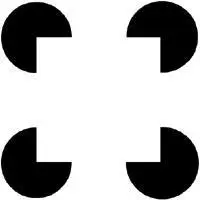Hood, Bruce - Supersense
Здесь есть возможность читать онлайн «Hood, Bruce - Supersense» весь текст электронной книги совершенно бесплатно (целиком полную версию без сокращений). В некоторых случаях можно слушать аудио, скачать через торрент в формате fb2 и присутствует краткое содержание. Год выпуска: 2009, Издательство: Constable Robinson, Жанр: Старинная литература, на английском языке. Описание произведения, (предисловие) а так же отзывы посетителей доступны на портале библиотеки ЛибКат.
- Название:Supersense
- Автор:
- Издательство:Constable Robinson
- Жанр:
- Год:2009
- ISBN:нет данных
- Рейтинг книги:3 / 5. Голосов: 1
-
Избранное:Добавить в избранное
- Отзывы:
-
Ваша оценка:
- 60
- 1
- 2
- 3
- 4
- 5
Supersense: краткое содержание, описание и аннотация
Предлагаем к чтению аннотацию, описание, краткое содержание или предисловие (зависит от того, что написал сам автор книги «Supersense»). Если вы не нашли необходимую информацию о книге — напишите в комментариях, мы постараемся отыскать её.
Supersense — читать онлайн бесплатно полную книгу (весь текст) целиком
Ниже представлен текст книги, разбитый по страницам. Система сохранения места последней прочитанной страницы, позволяет с удобством читать онлайн бесплатно книгу «Supersense», без необходимости каждый раз заново искать на чём Вы остановились. Поставьте закладку, и сможете в любой момент перейти на страницу, на которой закончили чтение.
Интервал:
Закладка:
The brain did not fall out of the sky, ready packaged to deal with the world. 14Rather, our brains gradually evolved to solve the problems that faced our ancestors. Our complex modern brain has emerged by accumulating small, subtle changes in its structure passed on from one generation to the next. This is the field of evolutionary psychology, and, as the computer scientist Marvin Minsky succinctly puts it, the mind is what the brain does. Our minds are constantly active, trying to make sense of the world by figuring out how it works. This is because the world is complex, confusing, and filled with missing information. Each of us is a sleuth trying to complete the puzzle, find the culprit, and solve the crime when it comes to understanding.
What we do naturally and spontaneously at the most basic level is look constantly for patterns, imagining hidden forces and causes. Even the way we see the world is organized by brain mechanisms looking for patterns. At the turn of the twentieth century, the German Gestalt psychologists demonstrated that humans naturally see patterns by organizing input with certain unlearned rules. What these early psychologists realized was that the world is full of input that is often cluttered, ambiguous, or simply missing. The only way the mind can sort out this mess is by making guesses about what is really out there.
For example, a pattern made up of four pies with a slice taken out of each one is usually seen as a white square sitting in front of four dark circles. Our mind even fills in the missing edges of the square in between the pies. But the square does not really exist. Our brains have created something out of nothing. More spookily, we can measure activity in those areas of the brain that would be active if the square really existed! This area, known as the visual cortex, is a three-millimetre layer about the size of your credit card that sits directly at the back of your head. Contrary to popular misconception, it’s not your eyes but your brain that does the seeing. The brain cells in this region are all related to vision in some form or another. So, in this region, the brain registers what is really out there in the world, makes a decision about what should be out there, and then generates its own brain activity as if what it has decided should be out there really is. 15Even when a perception is a trick of the mind, it still shows up as real brain activity. This filling-in process reveals how our brains are wired to make sense of missing information. Four-month-old babies also see this ghostly square. 16We know this from a simple behaviour: babies get bored when shown the same pattern over and over again. Wouldn’t you? So if you present babies with the ghostly square, they eventually stop looking at it. If you then show them a real square, they remain bored, whereas they perk up and get excited if you show them something else, like a circle. In other words, they must have seen the illusory square, eventually got tired of looking at it, and found the real square just the same as the imaginary one their mind had created out of nothing. Such studies tell us that baby brains are designed for filling in missing information and making sense of the world.
As my colleague Richard Gregory has argued, illusions like the missing-square pattern reveal that the mind is not lazy. Our minds are actively trying to make sense of the world by thinking of the best explanation. For example, if someone took a handful of coffee beans and scattered them across a table in front of you, you would immediately see patterns. Some beans would instantly cluster together into groups as you simply looked at the array. Have you ever watched the clouds on a summer’s day turn into faces and animals? You can’t stop yourself because your mind has evolved to organize and see structure. The ease with which we see faces in particular has led to the idea that we are inclined to see supernatural characters at the drop of a hat. Each year some bagel, muffin, burnt toast, potato chip, or even ultrasound of a fetus showing the face of some deity is paraded as evidence for divine miracles.

FIG. 2: Both infants and adults see an illusory white square in the typical Kaniza figure. AUTHOR’S COLLECTION.
We also seek out patterns in events. Our mind design forces us to see organization where there may be none. When something unusual or unexpected happens, we immediately look for order and causes. We cannot handle the possibility that things happen randomly by chance. It may even be impossible for the mind to think in terms of random patterns or events. If I asked you to generate a random pattern, you would find this incredibly hard to do. Try it out for yourself at a keyboard. Empty your mind and simply press either the ‘1’ or ‘0’ key whenever you feel like it. Be as random as you can. For example, here’s my attempt with forty-eight key presses:
1 0 0 1 1 0 0 1 0 1 0 0 0 1 1 1 0 0 1 0 0 1 0 1 1 0 1 1 0 0 1 0 1 0 1 1 0 1 0 0 1 0 1 1 0 0 1 1
I felt I was being random, and at first glance the pattern looks pretty disorganized. If you count the number of times I typed ‘1’, then I have done pretty well with exactly half (twenty-four). Now consider the same sequential key presses in groups of two.
10 01 10 01 01 00 01 11 00 10 01 01 10 11 00 10 10 11 01 00 10 11 00 11
There are five 00 pairs, seven 01 pairs, seven 10 pairs, and five 11 pairs. If the sequence was truly random, then these pairs should be equal, but I was much more likely to alternate (fourteen times with either 10 or 01) key presses than to press the same key twice (ten times with either 00 or 11). The difference may seem small, but it becomes highly significant over more trials. If you break the sequence into the eight possible triplets, then the patterns become even more obvious.
Our brain has its natural rhythms that it likes to settle into. This is how the best rock-paper-scissors players succeed. To remind you, it’s a game between two players in which, after the count of three, each player has to produce a rock (fist), paper (open hand), or scissors (first two fingers open). Scissors beats paper, which beats rock, which in turn beats scissors. The object of the game is to guess what your opponent will produce. To succeed you have to be as random in the three options as possible. World champion players (yes, they do exist) are not psychic. 17They are expert at detecting patterns and generating their own random sequences, but this skill requires a lot of mental energy, especially from the frontal parts of the brain that control planning. 18
It is just as difficult to think and act randomly by effort of will as it is to perceive a random world. Because our minds are designed to see the world as organized, we often detect patterns that are not really present. This is particularly true if we believe that patterns should be there in the first place. So someone who believes that supernatural forces operate in the world is on the lookout for examples of strange, inexplicable phenomena and conveniently ignores the multitude of mundane events that do not fit this interpretation. We forget every typical phone call but remember the unexpected one because it draws our attention. The flip side of mind design is that we also fail to realize that events that we think are highly unlikely are in fact not so unlikely. Meeting people at a party who share the same birthday seems unlikely. With this bias toward detecting patterns, someone who is inclined to supernatural belief has ample opportunity to see evidence for significant chains of events where there is none. This is the product of our mind design, and there is good evidence that we all differ in the extent to which we see order or chaos in the world. Later, I examine the idea that the difference between believers and nonbelievers may be due more to how they interpret the world than to what they have been told to believe.
Читать дальшеИнтервал:
Закладка:
Похожие книги на «Supersense»
Представляем Вашему вниманию похожие книги на «Supersense» списком для выбора. Мы отобрали схожую по названию и смыслу литературу в надежде предоставить читателям больше вариантов отыскать новые, интересные, ещё непрочитанные произведения.
Обсуждение, отзывы о книге «Supersense» и просто собственные мнения читателей. Оставьте ваши комментарии, напишите, что Вы думаете о произведении, его смысле или главных героях. Укажите что конкретно понравилось, а что нет, и почему Вы так считаете.












